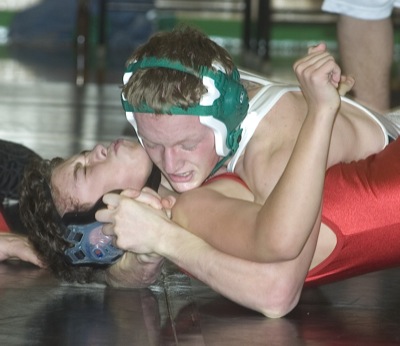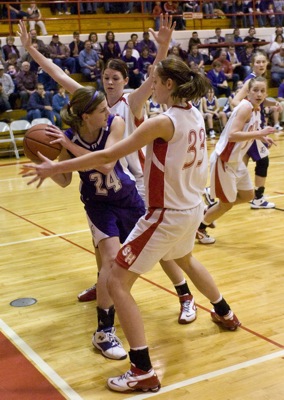Friday, January 11th, 2008
New state program to help recruit younger poll workers
Auglaize County election officials to give it a try during March election
By Janie Southard
The average age of 72 for Ohio poll workers could drop this coming election due to collaboration between county election boards and high school students involved in Youth at the Booth, the state's pilot program to recruit poll workers.
"I don't think our average is quite that high here, more like 65, but even so a lot in that age group goes south for the winter," said Carolyn Campbell, executive director of the Auglaize County Board of Elections. "We need 160 poll workers for the March election, so I think Youth at the Booth is going to really help us out."
Youth at the Booth is a state program permitting eligible high school seniors to serve as poll workers. Due to the expected size of the March election, Auglaize County will use six instead of four workers at larger polling locations, a situation that puts a strain on local resources.
"We decided it's a good time to try this idea we heard about last year at a state-wide conference," she told the newspaper Thursday afternoon.
Youth at the Booth is being piloted in St. Marys largely because of County Commissioner Doug Spencer, a former government teacher at Memorial High School.
"I knew Doug could get me to the right people right away to get this thing going," Campbell said.
Spencer was more than pleased to get this project to his former work site.
"When Carolyn asked me if I could help implement this program, I can tell you as a former government teacher, I am on board any time we can get our young people involved in the political process," said Spencer via telephone interview.
It will be exciting for the students who will earn $115 ($95 for the day and $20 for the training time) for their efforts but it will also be a major commitment for the 13 kids who will be expected to begin their 14-hour day at 6 a.m.
To be eligible students must be at least 17 years old, a senior and have permission of the school district, teachers and parents. They will be expected to perform the same duties as all poll workers, except not those of the precinct judge. They'll be looking up names, writing names in logs, handing out ballots, etc.
Spencer pointed out the students will have to make the declaration of their political party because this coming election is a political party primary. One thing government teachers do is identify the differences between the two parties' ideologies.
"They'll be well prepared. This won't be some random guess," Spencer said.
One of the St. Marys high school's present government teachers, Andy Klosterman, who was himself one of Spencer's students, is now in his second year at Memorial and is one of the two teachers explaining the difference in the two political parties.
The other government teacher, Mike Jay, is coordinating this program at the school, but was unavailable for comments prior to press time.
Klosterman gave an overview of portions of what students are taught today about politics and the two-party system.
"We first talk about how you become affiliated over time with a certain party and to what extent. You may be in the middle of the party's (beliefs) or really tied to a party, which is usually because your parents or grandparents are in the middle or tied.
"The second reason for a certain party affiliation is what your peers do and your socio-economic situation. If you're wealthy you feel differently than if you're middle class or poor. That has a lot to do with it," Klosterman told the newspaper via telephone interview.
The basic ideologies of the two major political parties tend to be: Republicans are more tradition based, more black and white, more conservative; Democrats are more open-minded, more liberal, more open to change.
Young adults today are not so hard-core in one or another party. Klosterman estimated more than 80 percent of his students are middle ground in their party, and many want nothing to do with the two-party system making them independents.
"We're hoping this works out with the kids. The only bad part is that we'll only have these kids for one election. Because they're all seniors, they'll graduate and probably be gone," Campbell said.
However, if this trial proves successful, she's planning to sign up another group of seniors next fall thereby storing up poll workers for two elections.
"It's a great opportunity for everyone ... My bottom line is getting people to vote, whatever their party. If we can get a dozen high school kids excited about the process, they may pass it on to family and friends, which will benefit all of us," Campbell said.


